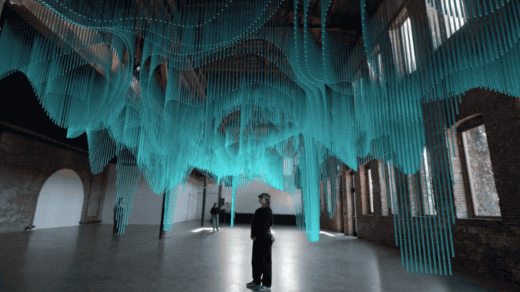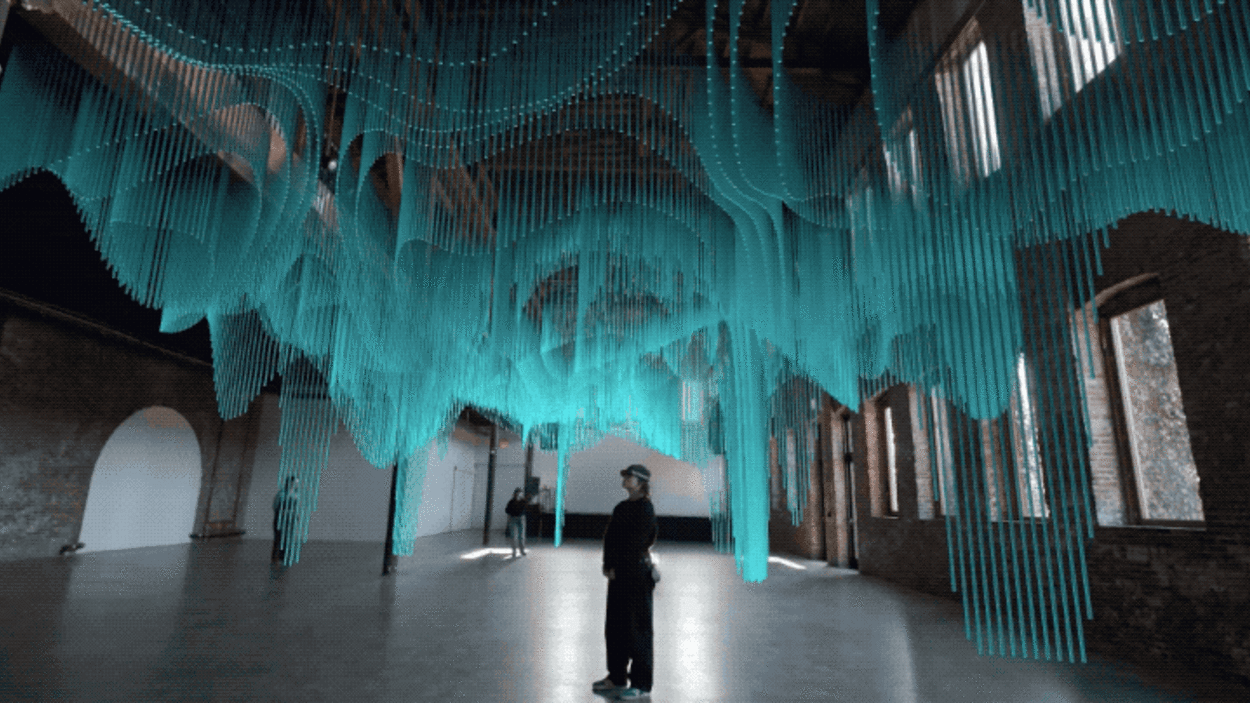This mixed reality installation at Brooklyn’s Pioneer Works shows off the beauty of Magic Leap’s headsets
By Joshua David Stein
Pioneer Works, the arts center and, until April 16th, the home of the mixed reality installation Medusa, occupies a former iron works on a remote corner in Red Hook, Brooklyn. (It is remote in the sense that the closest macchiato is a three-minute walk away.) Now emptied of its machinery and overseen by the artist Dustin Yellin, the main factory floor feels more like a cathedral. The racket of bygone flywheels and presses have been replaced by silence and sunlight. Never has the place felt more ecumenical than than now, when the vast space is completely empty, save for a solitary Yamaha Disklavier piano emitting an ethereal sound, its keys moving as if by an unseen hand.
It looks empty, but it isn’t quite. This becomes clear as soon as visitors don their Magic Leap 2 headsets upon entering (and leave an ID, as collateral). With its circular mirrored lenses and sleek black casing, the $3,299 headset looks both vaguely Edwardian and slightly Mad Max-y. Unlike virtual reality, mixed reality—as the name suggests—doesn’t supplant one’s field of vision; it augments it. This super lightweight model, introduced last year, represents the cutting edge of augmented, or mixed, reality with a 70 degree field of vision, dynamic dimming, and the ability to communicate with other nearby Magic Leaps.
Even with the headset on, however, the space seems empty at first. But when one looks up, oh boy. Medusa consists of great undulating aquamarine rods of light anchored to the ceiling that seem to dance and wave. Some remain distant, emanating high up in the soaring ceiling; others plunge down to the floor. All constantly move like snakes or, more appropriately, the tentacles of a Portuguese man-o’-war. (In the U.K., where the show was first mounted in 2021 at the London Design Festival, a man-o’-war is called a medusa.)
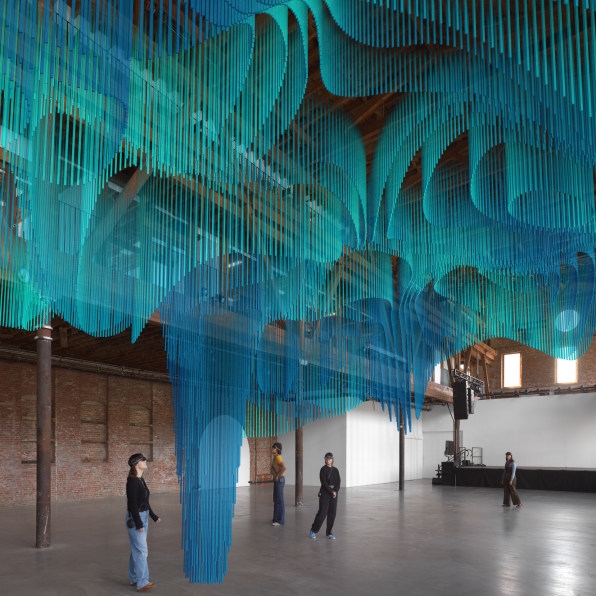
The work is a collaboration between Tin Drum, a technology collective made up of designers, coders, artists, and scientists; director Yoyo Munk; and Tokyo-based architect Sou Fujimoto, who is known for his revolutionary mixing of organic and inorganic forms. The idea began at a dinner party in London in 2019, says Todd Eckert, the founder and CEO of Tin Drum. “I met Ben Evans, the director of the London Design Festival, and we started a very open-ended conversation about what architecture means if it’s free from the physical realities of shelter or boundary or whatever it is that it’s supposed to do.”
Gray of hair, blue of eye, and black of outfit, Eckert, who previously served as Magic Leap’s Director of Content Development, seems like the kind of guy whose dinner party conversations actually amount to something. In an earlier life, he was a music journalist. He served as the producer of the excellent Joy Division feature film Control. With Tin Drum, which he founded in 2016, he’s been obsessed with how technology can liberate storytelling. In 2018, he collaborated with the artist Marina Abramoviç on his first volumetric capture project, using 48 cameras, trained inward, to capture the artist from all angles. When the piece premiered at London’s Serpentine Gallery, he was shocked by the response. “Some people clapped,” he says excitedly, “Some people cried.”
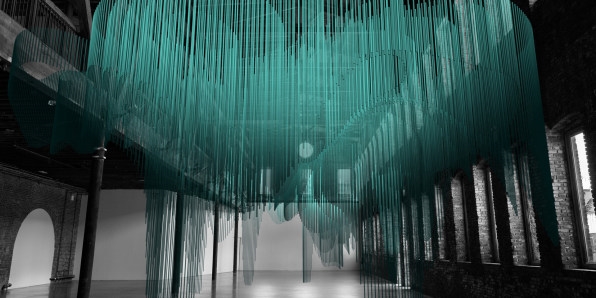
Eckert has dreams of using mixed reality not just for architecture but for all media. In fact, he tells me, excitedly, Simon Stephens, the playwright who adapted the Curious Incident of the Dog in the Night-time for the stage, has written a play native to the medium. This summer, Tin Drum will be presenting a mixed reality concert at the Shed in Manhattan with legendary Japanese composer Ryuichi Sakamoto. With Magic Leap, he says, “I think I can offer something that’s in some ways possibly a more complete expression of what human beings are.”
But wandering around Medusa, I felt both full of awe and of dread. As the spectral becomes real, one can’t help but worry that the real will become spectral. Because each visitor to the installation beholds her own ineffable reality, one is inescapably alone, even in a group. This is a particularly salient and sobering thought when it comes to mixed reality. The same technology—in fact the same headsets—being deployed at Pioneer Works also has applications in the world of defense and security.
According to Magic Leap, the Magic Leap 2 can “simulate and train custom emergency response scenarios, plan and visualize deployment of assets, map geo-specific data in real time, and collaborate with enhanced situational awareness.” (One reason the U.S. Army, after investing heavily in Microsoft’s HoloLens technology, forecasts the deployment of 121,500 AR goggles in the upcoming years.) Not that the commingling of technology and art is novel. Technology has always been a handmaiden of war, industry, and art in equal measure.
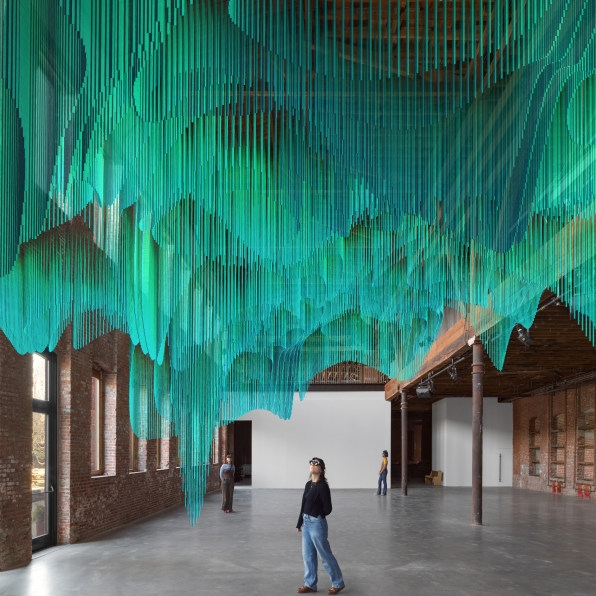
After removing the headset, Pioneer Works falls back into stillness and those still wearing it, wandering around gawping with wonder, heads heavenward, seem under some sort of communal spell or mass delusion. But, like the Medusa installation itself, the space that seems empty never really is. It’s just a matter of what lens through which one looks.
Through the lens of time, for instance, Pioneer Works is still crowded with stories. When the iron works were active, local papers were full of reports of workers injured at the intersection of technology, commerce, and capital: 17-year-old George Taylor, both arms caught in machinery belting, taken to Long Island Hospital in 1883. Patrick O’Neal, dead at the forge in 1899. Julius Kaster, crushed by a girder in 1905.
One wonders how future generations will consider today’s visitors, peering through their lenses into the sunlit air and, like pioneers, on the outer edge of the known.
(19)

